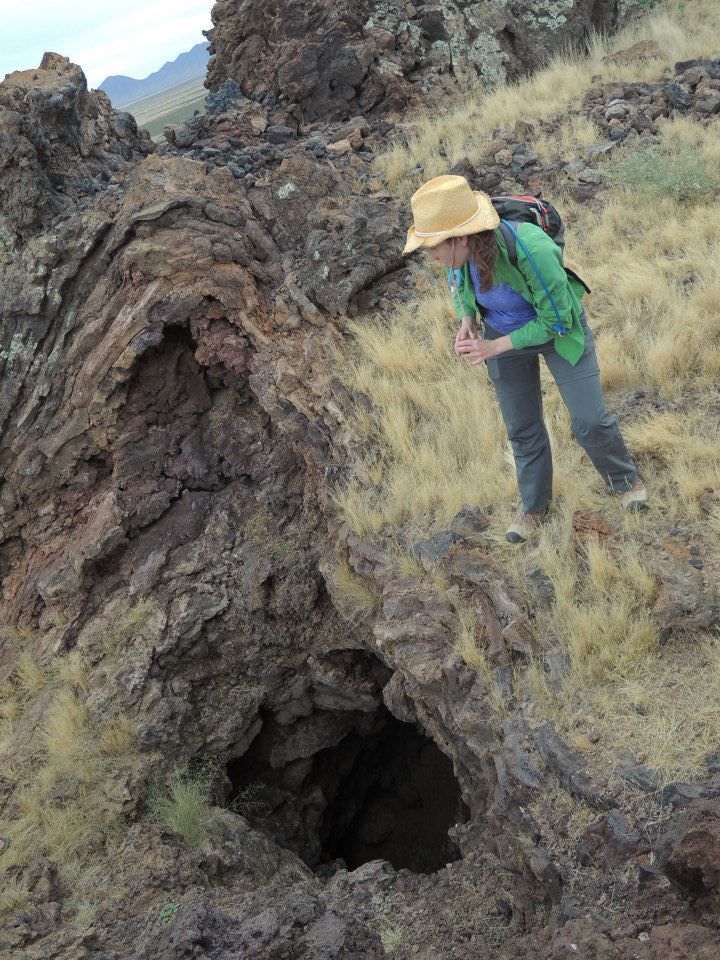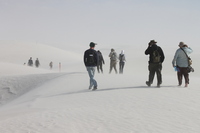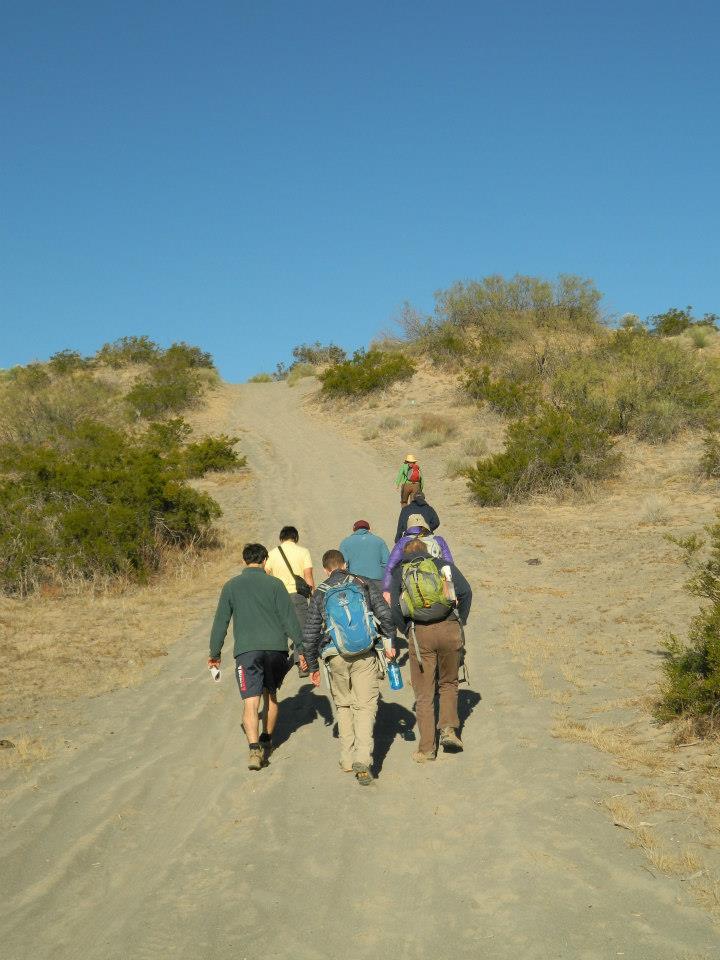LPL Fieldtrip Fall 2014: Southern New Mexico
by Shane Byrne
As rovers crawl across the surface of Mars, they can investigate small-scale structures in sedimentary rock that can’t be seen from orbital datasets. These structures can tell us a lot about the environment within which the rocks were deposited. Terrestrial geologists have been interpreting these features for a long time, but it is a relatively new tool in planetary science. On this trip we journeyed to southern New Mexico where we saw examples of deposits from volcanic base surges and aeolian material that contain some of these sedimentary structures.
Our first stop for this LPL field trip was Kilbourne hole and the neighboring Aden lava flow (a good example of an inflated flow with polygonal fractures). Kilbourne hole is a Maar crater i.e., where subterranean magma encounters ground water and generates repeated explosions. These explosions throw out debris and generate base surges that can mobilize these particles into cross-bedded patterns. Later erosion at Kilbourne Hole allows us to see cross-sections of this stratigraphy and occasional volcanic bombs that are embedded within it. Kilbourne Hole is also famous for its mantle xenoliths—chunks of almost pure olivine carried to the surface from great depth. They are hard to find these days as the site was been thoroughly picked over by geo-tourists, but we were lucky enough to discover a large one (~40 pounds). It is also well known for its large rattlesnake population, which we fortunately failed to discover.
After leaving Kilbourne Hole, we traveled to the White Sands dune field. Cross-bedding in the making can be observed here as gypsum sand avalanches down dune slipfaces. White Sands has many types of dunes (from parabolic to barchan) and a wide range of dune migration rates, which can be clearly measured in orbital imagery and airborne LIDAR datasets (dune migration rates can now also be routinely measured on Mars through HiRISE orbital imagery). We hiked out to Alkali Flats to see the source of the dunefield—gypsum crystalizes on the surface of a playa here before blowing eastward towards the dunes. One non-geologic highlight of the trip was the permission to camp overnight within the park. Incredibly dark skies even allowed for views of the zodiacal light and the white dunes illuminated by starlight gave this terrestrial analog an unearthly quality.
|
|
|
|
|




